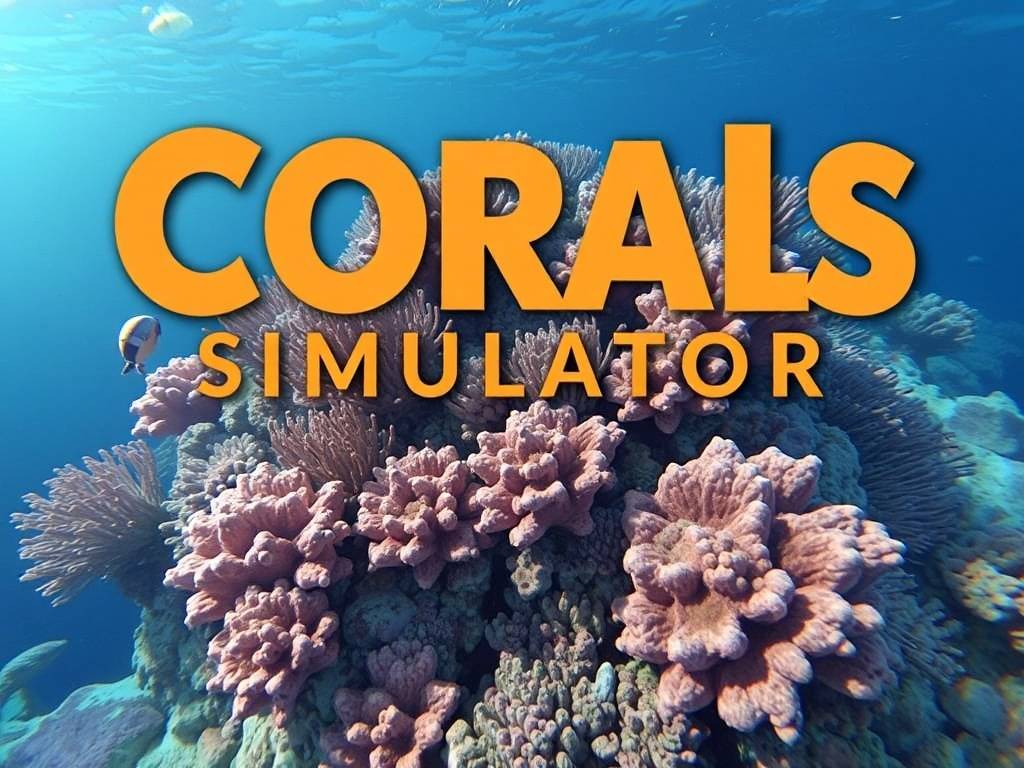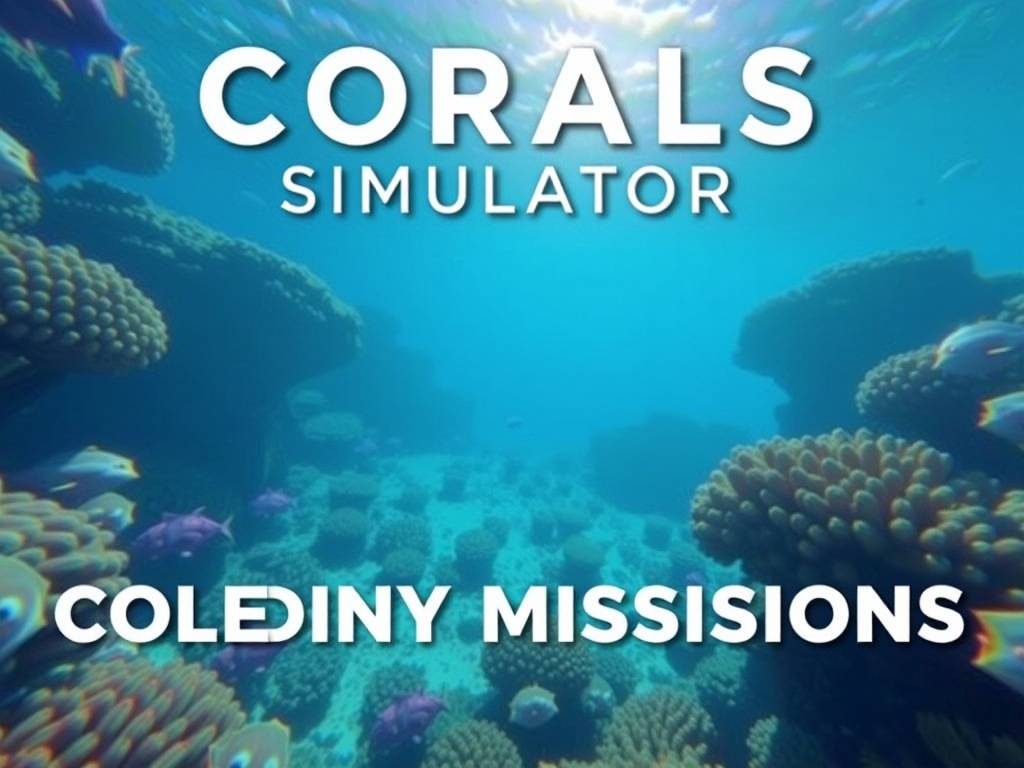Diving Deeper: How the Colony Missions Update Transforms Corals Simulator VR from a Digital Aquarium into an Ecosystem Odyssey
The serene, almost hypnotic world of Corals Simulator VR has always been a sanctuary. Since its inception, it has offered users a unique, meditative escape: the ability to don a headset and become a digital steward of a vibrant coral reef. The core loop of nurturing polyps, managing water chemistry, and watching a barren rock blossom into a kaleidoscope of life was, and remains, profoundly satisfying. But a sanctuary, by its nature, can feel somewhat static, a beautiful diorama to be observed and maintained. The newly launched Colony Missions Update shatters this glass wall, transforming the experience from a pristine aquarium simulation into a dynamic, narrative-driven ecosystem odyssey. This isn't just an update; it's a fundamental evolution of the game's soul.
From Curator to Conservationist: The Philosophy of the Missions
Previously, the player's role was that of an omnipotent, albeit caring, curator. The primary threats were internal—managing nitrate levels, ensuring adequate lighting, and controlling algae growth. The Colony Missions Update dramatically expands the scope of the player's responsibilities by introducing external, dynamic challenges that mirror the real-world perils facing our planet's reefs. You are no longer just a curator; you are now a frontline conservationist.

The update introduces a new "Mission Console" integrated seamlessly into your underwater habitat. This console receives distress signals and opportunities from various parts of your reef, framed as "Colony Missions." These missions are not simple fetch quests; they are complex ecological scenarios that require strategic thinking, quick action, and a deep understanding of marine biology. They are broadly categorized into three types, each testing a different aspect of your stewardship.

1. Rescue and Rehabilitation Missions: The Race Against Time
The most immediate and emotionally resonant missions are the Rescue and Rehabilitation tasks. Your console might alert you to a "Bleaching Event" in Sector 7-B. Upon teleporting to the location, you find a patch of your reef where corals have turned a ghostly white, their vibrant colors drained by simulated rising water temperatures. The mission isn't just to observe; it's to act.
Armed with new tools introduced in the update, you must work against a timer. The Thermo-Regulator allows you to carefully cool localized areas of water, creating safe havens. The Probiotic Diffuser lets you administer beneficial bacteria to help the stressed corals fight off disease. You must prioritize which colonies to save first, triaging based on species rarity and health status. Successfully nursing a bleached coral back to health, watching microscopic polyps slowly regain their zooxanthellae and color, is an incredibly rewarding experience that drives home the fragility of these ecosystems in a way no textbook ever could.
Other rescue missions involve saving fauna. You might be tasked with carefully untangling a sea turtle from a discarded fishing net (a poignant commentary on ocean plastic pollution) using a new precision laser tool, or guiding a disoriented juvenile clownfish back to its host anemone after a simulated storm disrupted its habitat.
2. Ecosystem Engineering Missions: Proactive Stewardship
While rescue missions are reactive, Ecosystem Engineering missions cast you in a proactive, almost god-like role. These missions challenge you to shape the reef's future by fostering specific symbiotic relationships. A mission might task you with "Increasing Parrotfish Population by 20% to Control Macroalgae."
This requires a multi-step process. First, you must identify and cultivate the specific types of coralline algae that parrotfish prefer. Then, you need to ensure the structural complexity of the reef provides adequate hiding spots from predators, perhaps by strategically placing rocky formations. Finally, you might need to introduce a breeding pair of parrotfish and protect their territory. This mission type brilliantly illustrates the concept of trophic cascades, teaching players that a reef is a complex web of life, not a collection of independent species.
3. Scientific Discovery Missions: Unlocking the Secrets of the Deep
The third mission type appeals to the explorer and scientist in every player. Scientific Discovery missions involve scanning new, rare species of coral or fauna that randomly spawn in your reef. Using a new Bio-Scanner tool, you must carefully document the new organism, taking detailed scans from multiple angles. Once documented, the species is added to a comprehensive "Digital Codex," complete with anatomical information and its role in the ecosystem.
Some of these missions can lead to unexpected chains. Discovering a new species of "Bio-luminescent Gorgonian" might unlock a secondary mission to study its light-producing properties, which could, in turn, lead to a new type of low-stress lighting for shade-loving corals. These missions provide a compelling reason to explore every nook and cranny of your expanding reef, fostering a sense of wonder and continuous discovery.
The Ripple Effect: Progression and Personalization
The Colony Missions Update is not a standalone feature; its genius lies in how it integrates with the core progression system. Completing missions rewards you with "Conservation Credits" and unique genetic strains of coral. These credits can be spent on new, more resilient coral species, advanced tools with greater efficiency, and cosmetic items for your habitat, like research buoys or underwater sculptures that also serve as artificial reefs.
This creates a powerful feedback loop. The better you perform as a conservationist, the more tools you have at your disposal to tackle even more complex challenges. Your reef becomes a living portfolio of your successes. A veteran player's reef will tell a story—a sector here saved from a severe bleaching event, a thriving population of grazing fish there thanks to a successful ecosystem mission. The reef is no longer just beautiful; it is a testament to your skill and dedication.
A Deeper Connection: The VR Advantage
While these mission mechanics would be engaging in any format, it is in VR that they become truly transformative. The sense of presence is everything. Hovering over a bleached coral, hearing the muted sounds of the ocean, and using your own hands to administer care creates a powerful empathetic connection. The urgency of a rescue mission feels real when you are physically there, watching a timer count down in your peripheral vision. The scale of a majestic manta ray gliding past after you've successfully cleaned its feeding grounds is an awe-inspiring sight that a flat screen cannot replicate.
Conclusion: More Than a Game
The Colony Missions Update elevates Corals Simulator VR from a tech demo or a simple relaxation tool into a profound piece of interactive environmental storytelling. It successfully gamifies the complex principles of marine biology and conservation without trivializing them. By giving players tangible goals, a sense of urgent purpose, and a deeper understanding of ecological interdependence, it fosters a connection to the subject matter that is both intellectual and emotional.
This update proves that a simulator can be more than a simulation; it can be a narrative engine for education and inspiration. It transforms your personal reef from a static display into a living, breathing, and struggling ecosystem that depends on your choices. In doing so, Corals Simulator VR ceases to be just a game about coral reefs and becomes an unforgettable journey into the heart of what it means to protect one of Earth's most vital and vulnerable biomes.


















